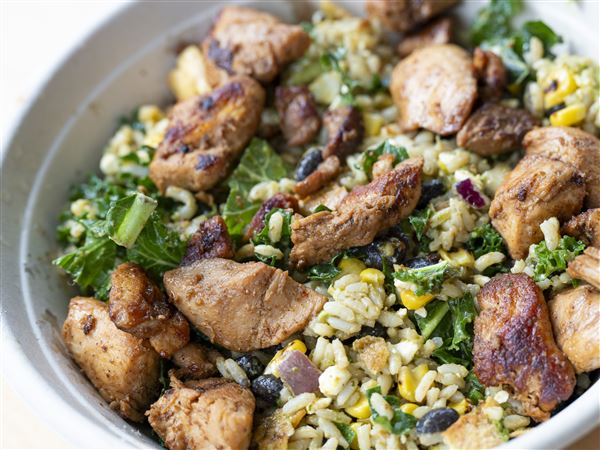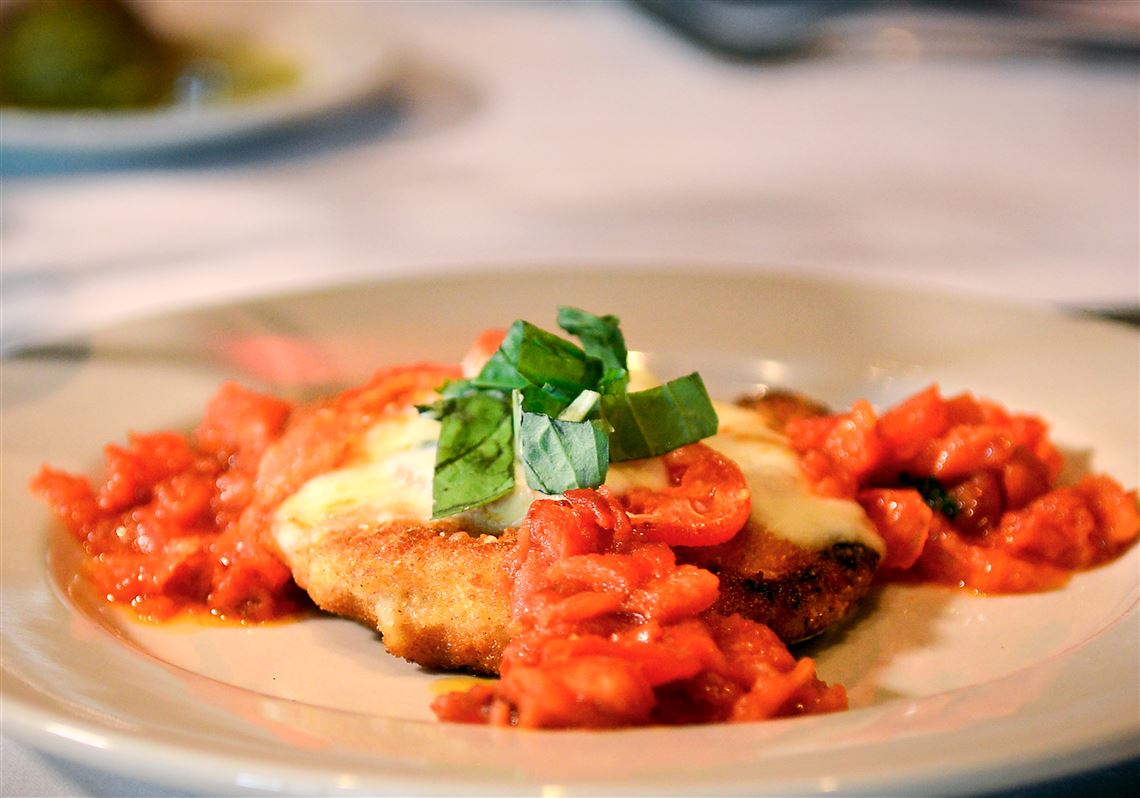Valentine’s Day is for lovers, and what better cuisine to woo your better half with than Italian?
Italian cooking is defined by simple, fresh ingredients and its most popular dishes often are quick and easy to prepare. It especially is perfect if you want to make some points with your mate Sunday with a home-cooked meal. (There’s a reason a Valentine’s Day is referred to as “amateur night” at restaurants.)
Another reason the cuisine helps seal the deal is because Italy’s linguistic pantry overflows with colorful words that just sound delicious. Who wouldn’t be smitten with a starter of taleggio (a stinky, nutty cheese) smeared on crusty bread, or an entree that involves frutti de mare (seafood) or anything made with pomodoro (tomato). Red, after all, is the color of love.
Here are two recipes from celebrity chef Lidia Bastianich’s new cookbook, “Lidia’s Mastering the Art of Italian Cuisine ” (Knopf; October 2015; $37.50), which she wrote with her daughter, Tanya Bastianich Manuali. They’re easy enough for novice cooks, but still impressive enough that you might just get lucky. I know I’d happily do the dishes if my husband cooked either one for me.
A Sicilian variation of a sauce made famous in Genoa in the 1800s, the pesto is unusual in that it is made with fresh cherry tomatoes and almonds instead of the traditional pine nuts and basil everyone associates with the dish. The chicken parm is a stunner, with a light crispy crust that pairs perfectly with the fresh, chutney-like tomato sauce that cooks up in about the time it takes to pour and enjoy a glass, or two, of Montepulciano d'Abruzzo (my favorite Italian red, and a great pairing for pasta dishes).
As a bonus, we’re including a video of Ms. Bastianich demonstrating the dishes in the Strip District kitchen of the restaurant that bears her name.
Bon appetito, amore mio!
— Gretchen McKay: gmckay@post-gazette.com, 412-263-1419 or on Twitter @gtmckay.
■
Spaghetti and Pesto Trapanese
(Pesto alla Trapanese)
PG tested
1/2 teaspoon kosher salt for water, plus more to taste
12 ounces cherry tomatoes, very ripe and sweet (about 2½ cups)
12 large fresh basil leaves
1/3 cup whole almonds, lightly toasted
1 garlic clove, crushed and peeled
1/4 teaspoon crushed red pepper flakes, or to taste
Salt to taste
1/2 cup extra-virgin olive oil
1 pound spaghetti
1/2 cup freshly grated Grana Padano
Bring a large pot of salted water to a boil for the pasta.
Combine tomatoes, basil, almonds, garlic, red pepper flakes and salt in a food processor to make a coarse puree. With the machine running, pour in olive oil in a steady stream, emulsifying the puree into a thick pesto. Taste, and adjust seasoning. (If you’re going to dress the pasta within a couple of hours, leave the pesto at room temperature. Refrigerate it for longer storage, up to 2 days, but let it return to room temperature before cooking the pasta.)
Scrape pesto into a large serving bowl. Cook spaghetti in the boiling water until al dente, then remove with tongs to the bowl with the pesto. Toss quickly to coat the spaghetti, sprinkle cheese all over, and toss again, adding a little pasta water if it seems dry. Serve immediately.
Serves 4 to 6.
— “Lidia’s Mastering the Art of Italian Cuisine” by Lidia Bastianich and Tanya Bastianich Manuali
■
Chicken Parmigiana Light
(Pollo alla Parmigiana)
PG tested
The sauce in this easy, can’t-miss dish is more like a chutney than a traditional marinara.
For chicken
4 boneless, skinless chicken thighs or breasts (about 1½ pounds)
Kosher salt to taste
Freshly ground black pepper to taste
All-purpose flour, for dredging
3/4 cup fine bread crumbs
2 large eggs
1 cup vegetable oil, for frying
3 ripe plum tomatoes, cored and thinly sliced
6 ounces fresh mozzarella or imported Fontina cheese, thinly sliced
For sauce
3 tablespoons extra-virgin olive oil
6 garlic cloves, crushed and peeled
8 ripe tomatoes, or 12 ripe plum tomatoes, peeled, seeded, and chopped
Kosher salt
Freshly ground black pepper
1/4 cup shredded fresh basil leaves
Preheat oven to 400 degrees. Cut off any fat, bone and gristle remaining on the chicken thighs. Place 2 thighs between 2 sheets of plastic wrap. Pound them lightly with the toothed side of a meat mallet to a more or less even thickness. Pound the remaining 2 thighs the same way.
Season chicken thighs with salt and pepper. Spread flour and bread crumbs on 2 plates. Beat eggs in a bowl until blended. Dredge chicken in flour to coat lightly, and tap off excess flour. Dip floured thighs in the beaten egg, letting the excess egg drip back into the bowl. Transfer chicken, one piece at a time, to the plate of bread crumbs, and turn to coat with bread crumbs, patting gently and making sure that each thigh is well coated.
Heat vegetable oil in a skillet over medium-high heat until a corner of one of the coated thighs gives off a lively sizzle when dipped in the oil. Add to the oil as much of the breaded chicken as fits without touching. Fry, turning once, until chicken is golden on both sides and cooked through, about 8 minutes. Remove it to a baking sheet lined with paper towels, and drain well. Cook remaining chicken (if necessary), adding oil and keeping it at the correct temperature.
Remove paper towels from the baking sheet. Top each chicken thigh with overlapping slices of tomato, dividing the tomatoes evenly. If you like this dish more traditional, top the chicken with some of the tomato sauce as well. Drape sliced cheese over the tomatoes to cover chicken completely.
For the sauce: Heat 3 tablespoons of olive oil in a large skillet over medium heat. When the oil is hot, add the garlic, and cook, shaking the pan, until it is golden brown, about 2 minutes. Carefully slide the chopped tomatoes into the skillet, season with salt and pepper, and cook until the sauce is slightly thickened, about 10 minutes. Remove the pan from the heat, set it aside, and fish out the garlic.
Bake the chicken until the cheese is lightly browned, about 10 minutes. While the chicken is baking, reheat the tomato sauce to simmering, stir in the basil, and taste, seasoning with salt and pepper if necessary. Spoon the sauce onto a heated platter or onto individual plates, and place the baked chicken over the sauce.
Serves 4.
— “Lidia’s Mastering the Art of Italian Cuisine” by Lidia Bastianich and Tanya Bastianich Manuali
First Published: February 10, 2016, 5:00 a.m.


















